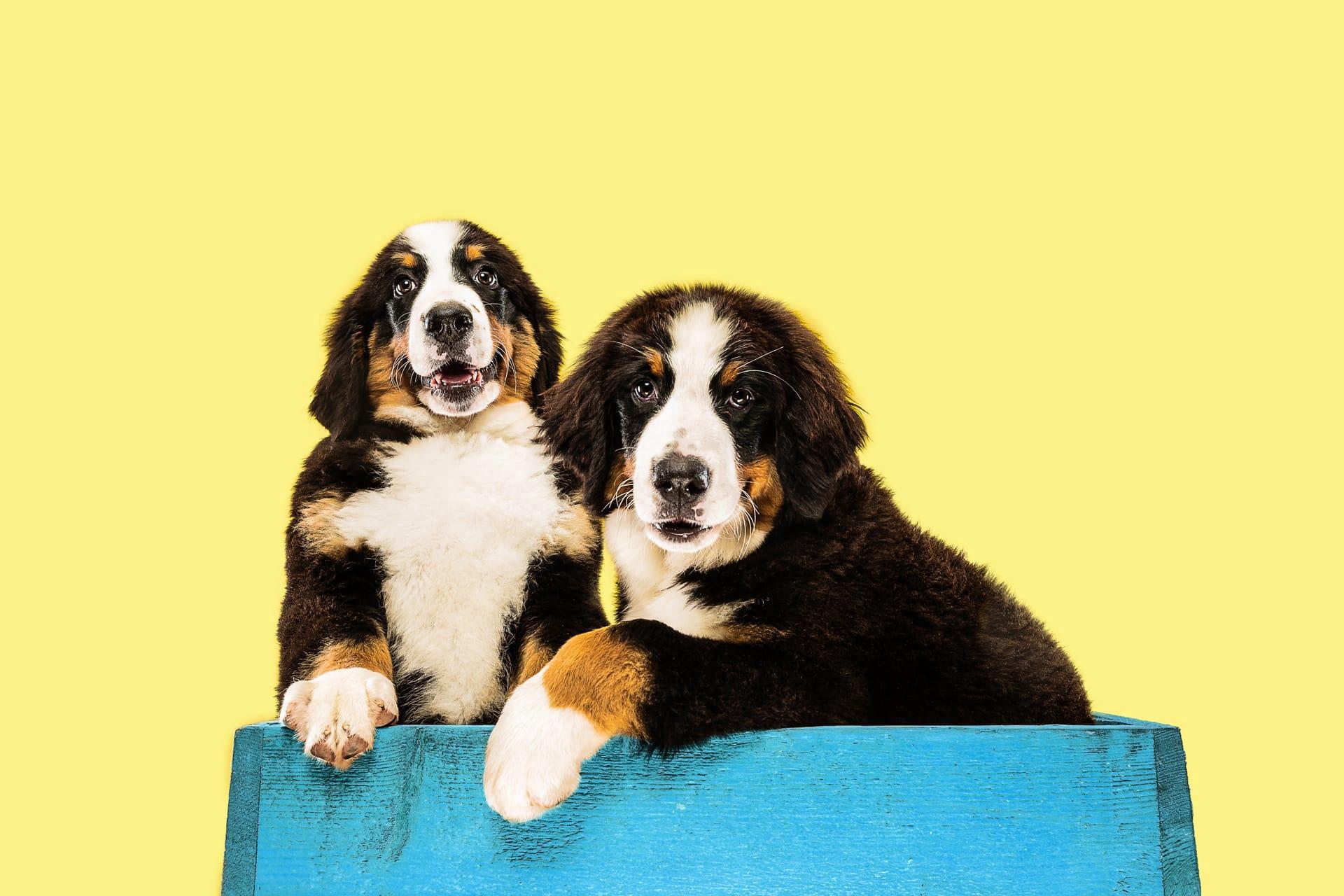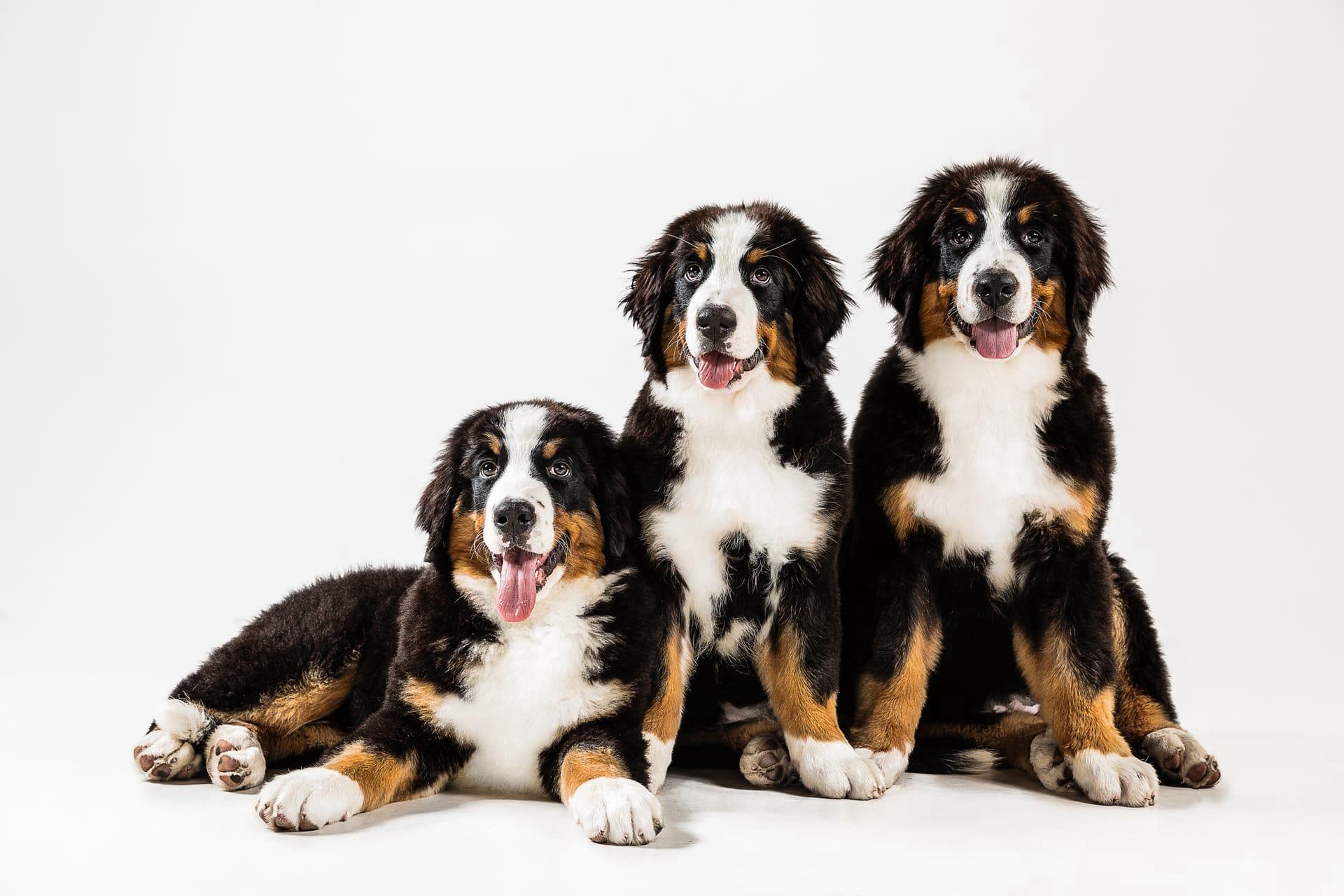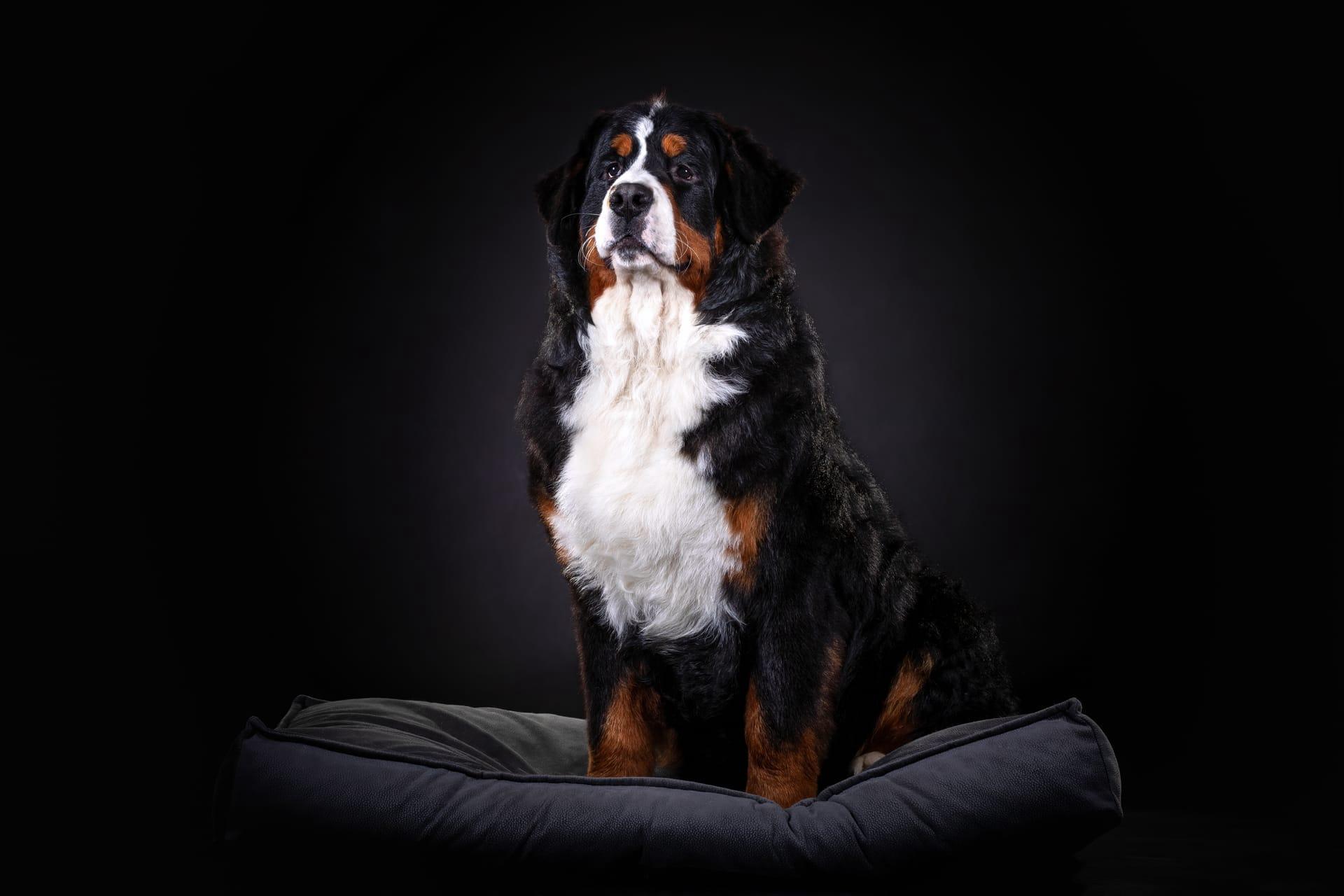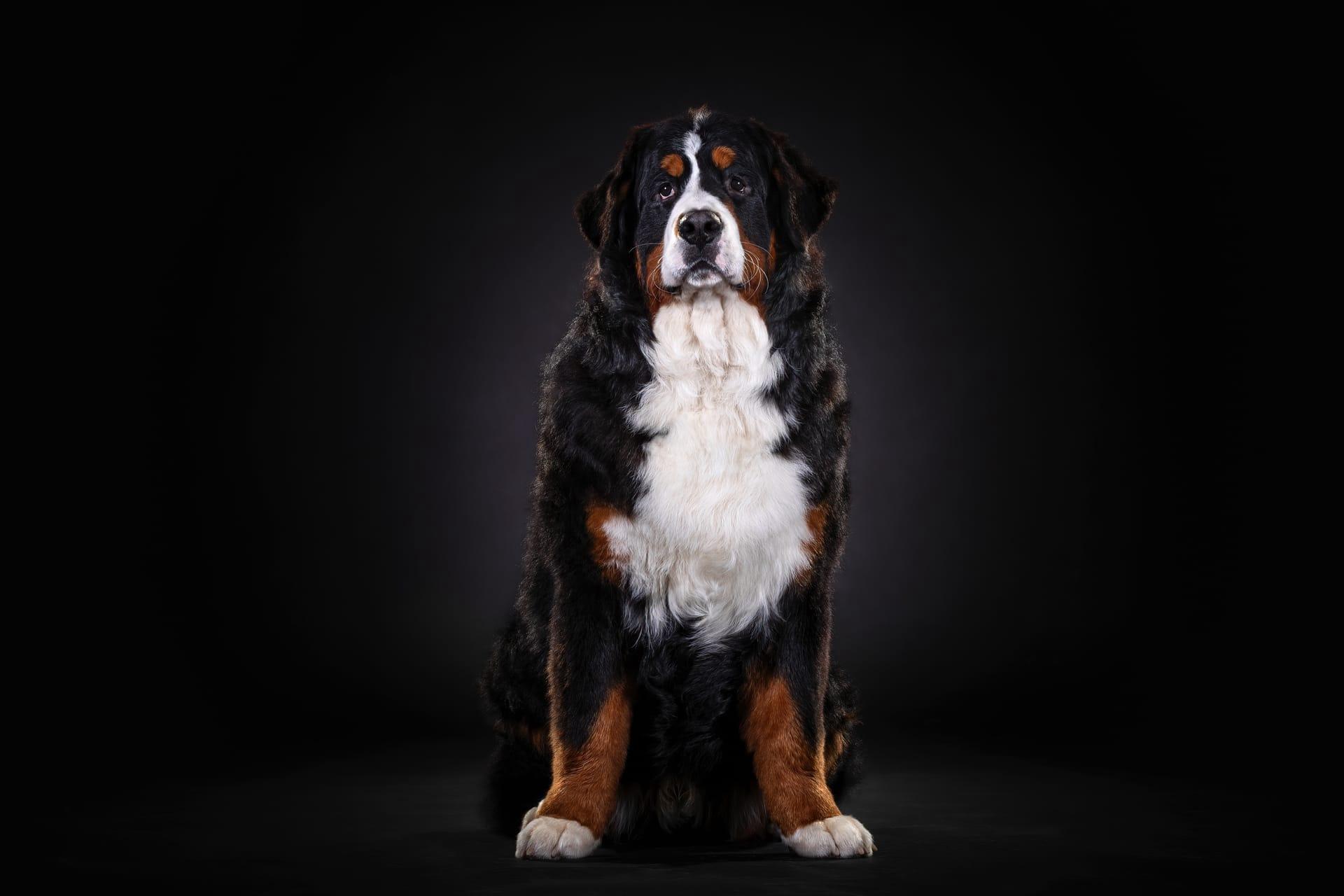Bernese Mountain Dog Characteristics
- Home /
- Mini Encyclopedia /
- Animal /
- Bernese Mountain Dog Characteristics
1
Bernese Mountain Dogs are a sight to behold, with their large, muscular frame and striking tri-color coat. These gentle giants stand between 23 to 27.5 inches at the shoulder and tip the scales at a hefty 70 to 115 pounds. Their lifespan, however, brings a touch of melancholy to their majestic presence, as they typically live only 7 to 10 years. This breed's luxurious double coat, marked by black, white, and rust hues, not only adds to their aesthetic appeal but also serves a practical purpose, protecting them from the harsh Swiss mountain climates they were originally bred to thrive in.
The most remarkable organ of a Bernese Mountain Dog isn't something you'd immediately notice, like their fluffy coat or soulful eyes. It's their highly developed sense of smell. This powerful tool isn't just for sniffing out treats; it plays a crucial role in their traditional tasks such as tracking and herding. The Bernese's olfactory prowess comes from their large nasal cavities, packed with olfactory receptors, enabling them to detect scents that would escape most humans and other breeds. This keen sense of smell was indispensable for mountain life, helping them to keep track of their herd and alert their human companions to strangers or dangers lurking in the vast, open landscapes.

2
Question: What's the best way to manage a Bernese Mountain Dog's shedding?
Answer: Managing a Bernese Mountain Dog's shedding involves a commitment to regular grooming. Their thick, double-layer coat requires brushing several times a week to remove loose fur and prevent matting, especially during the spring and fall when they shed more heavily. Investing in a high-quality brush and an undercoat rake can make this task more effective. Additionally, incorporating a balanced diet and ensuring they have a healthy environment can contribute to maintaining their coat's condition, reducing the amount of shed fur.

3
Bernese Mountain Dogs possess a moderate to high energy level that reflects their working-dog heritage. They thrive on regular, vigorous exercise—think long walks, hikes, or play sessions in a spacious yard. These activities not only keep them physically fit but also mentally stimulated, preventing boredom and associated destructive behaviors. Despite their size, they're not all about intensity; they also enjoy leisurely strolls and are always up for a play session, making them versatile companions for various outdoor adventures.
When it comes to feeding, Bernese Mountain Dogs have hearty appetites, befitting their size. They generally require a high-quality, nutritionally balanced diet tailored to their life stage, size, and energy level. An adult Berner might consume about 3 to 6 cups of dry dog food per day, divided into two meals. Since they're prone to bloat, it's crucial to avoid feeding them right before or after intense exercise and to ensure they eat slowly, possibly with the aid of a slow-feeder bowl.

4
Bernese Mountain Dogs originated in the Swiss Alps, where their thick coats and sturdy build made them well-suited to the cold, mountainous environment. They were bred as farm dogs, capable of herding cattle, pulling carts, and serving as loyal companions to the farmers and dairymen. Their adaptability to outdoor living, combined with their need for space to roam and exercise, makes them best suited for homes with large, secure yards rather than small, confined spaces.
Reproduction in Bernese Mountain Dogs requires careful consideration due to their susceptibility to genetic health issues. A typical litter size ranges from 4 to 10 puppies. Responsible breeding practices involve health screenings for both parents to reduce the risk of hereditary conditions such as hip dysplasia, elbow dysplasia, and certain cancers. Early socialization and health checks are crucial for the puppies to ensure they grow into well-adjusted, healthy adults.

5
Book: "The Complete Guide to Bernese Mountain Dogs" by Mary Nielsen. This comprehensive guide dives into the heart of the breed, covering their history, characteristics, and care requirements. Nielsen, a seasoned dog breeder and trainer, offers insights into the Bernese's temperament, health considerations, and training tips, making it an invaluable resource for both prospective and current owners. Published in the USA, this book has become a go-to source for understanding and nurturing these gentle giants.
Book: "Bernese Mountain Dogs: A Legacy of Loyalty" by Louise Harper. Set against the backdrop of the Swiss Alps, Harper's book explores the rich heritage and enduring spirit of the Bernese Mountain Dog. Through engaging narratives and practical advice, the author delves into the breed's origins, work ethic, and the deep bond they share with their human companions. Harper, known for her dedication to canine welfare, also addresses the importance of responsible breeding and ownership in preserving the health and happiness of these magnificent dogs.